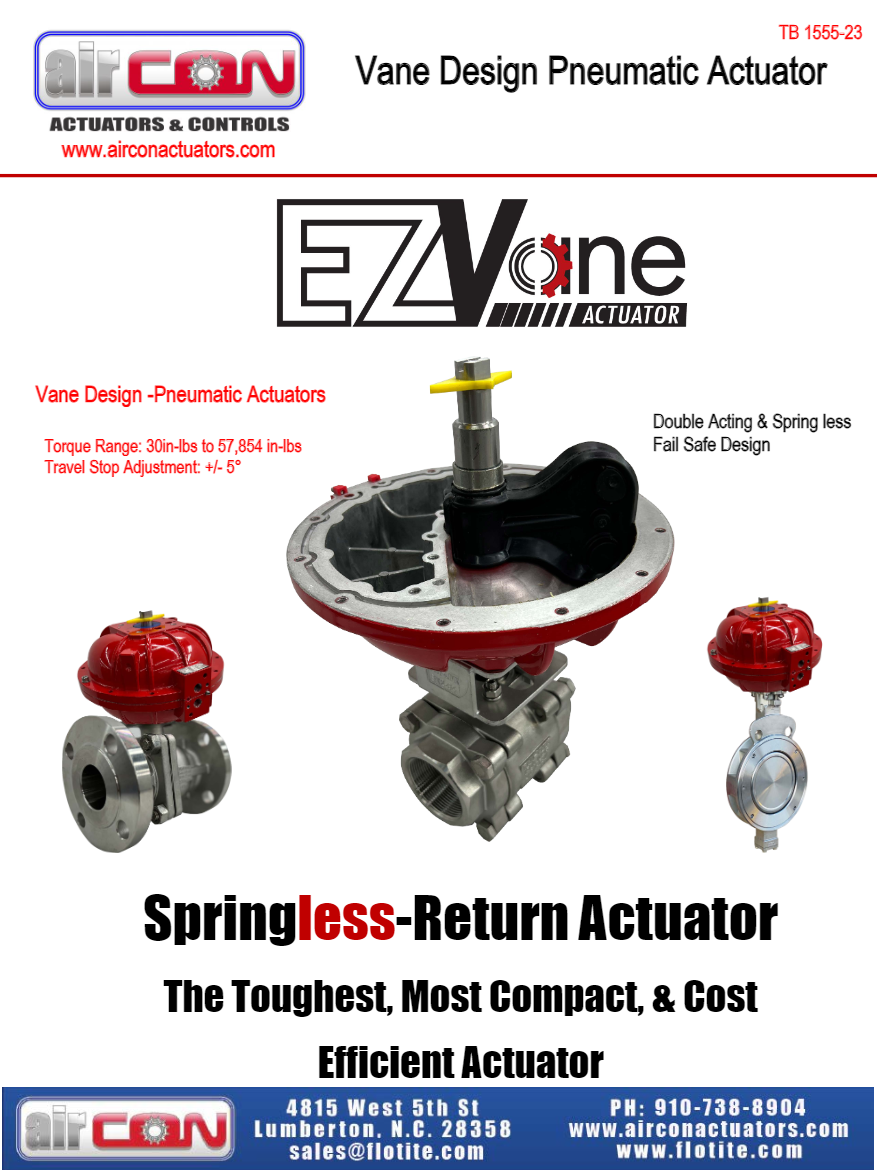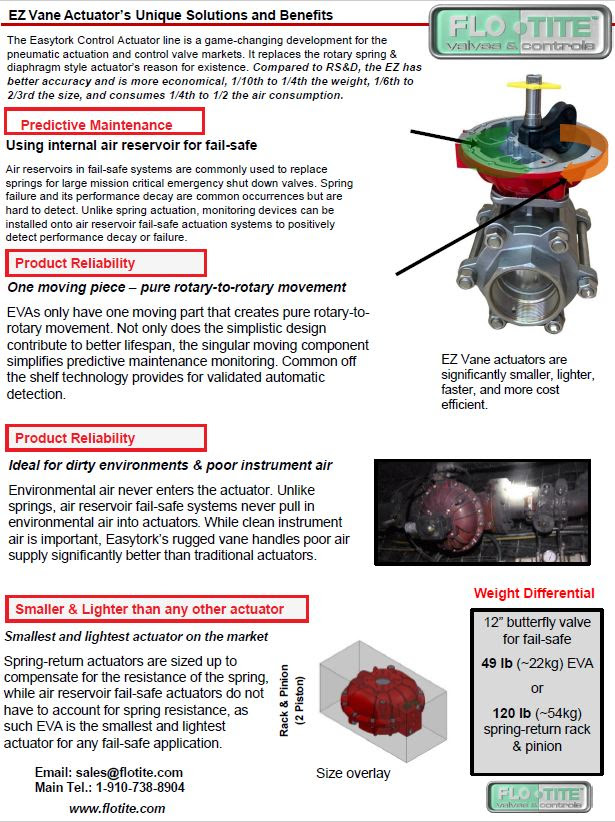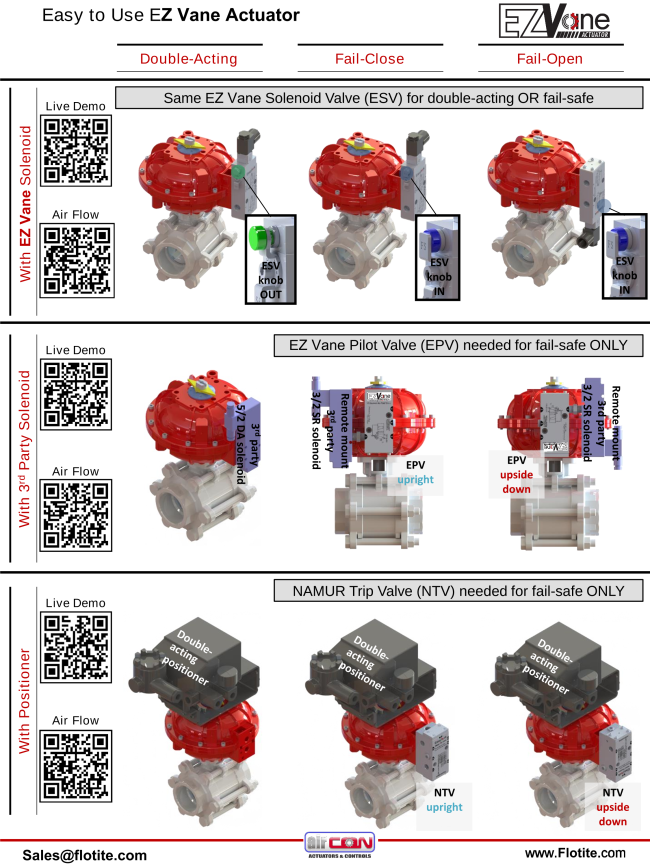Meet One of Flo-Tite’s Newest Actuators: The EZ Vane
Why Vane Actuators for Control Valve Accuracy
By Bob Donnelly
Control Valves need to be both precise and fast to reduce process variability. Most control action consists of small changes (1% or less), therefore at a minimum for any control valve to be functioning accurately it should reach small set point changes within the desired time frame. Control valve diagnostics work by measuring the actual movement of the valve stem relative to the signal input to the positioner. For proper control the stem should move instantaneously equal to the required input change. Thus, the actuator’s role in controlling process variability is critical.
For the most accurate controls for rotary control valves is to have a rotary-to-rotary vane actuator with a secure connection to the valve stem. This solution represents a smaller in size and lighter configuration compared to competitive actuator designs. Additionally, for rotary control valves the vane design offers the precision and speed necessary for small and large step changes. The vane actuator can be mounted to the valve stem so that there is zero dead band inherent in the motion of the actuator and the valve. This is critical in a control valve package because otherwise you will have oscillation in the process and will not be able to get the desired fine resolution required. Lastly, vane actuators have full air supply on both sides of the vane and on spring-return designs the springs are carefully balanced against the pressure Why is control so critical ? Because less process variability equates to saving money and associated down time in any process control operation utilizing control valves.
Bob Donnelly is the Vice President of Business Development for Flo-Tite Valves & Controls






